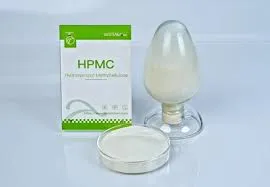
Nov . 19, 2024 01:49 Back to list
hpmc viscosity grades
Understanding HPMC Viscosity Grades Importance and Applications
Hydroxypropyl Methylcellulose (HPMC) has become a staple in various industries due to its versatile properties and wide range of applications. One of the key aspects that define the utility of HPMC is its viscosity grades. This article aims to delve into the significance of HPMC viscosity grades, their implications in different industries, and how they influence product formulation.
What is HPMC?
HPMC is a semi-synthetic polymer derived from cellulose. It is primarily used as a thickening agent, binder, and film-forming agent. Due to its unique properties, HPMC is utilized in food, pharmaceuticals, cosmetics, and construction materials. Its ability to retain water and form gels makes it essential in enhancing texture and stability in various formulations.
Understanding Viscosity Grades
Viscosity is a measure of a fluid’s resistance to flow. In the context of HPMC, viscosity grades refer to the thickness or consistency of the HPMC solution when it is dissolved in water. HPMC is manufactured in various viscosity grades, with each specifically tailored for diverse applications. These grades range from low viscosity, which offers a free-flowing liquid, to high viscosity that provides a thicker, more gel-like consistency.
The viscosity of HPMC is influenced by factors such as the degree of substitution and molecular weight. The degree of substitution refers to the extent to which the hydroxyl groups in the cellulose backbone are replaced with hydroxypropyl and methyl groups. A higher degree of substitution typically results in lower viscosity, while a higher molecular weight yields higher viscosity grades.
Applications of HPMC Viscosity Grades
hpmc viscosity grades

1. Pharmaceuticals In the pharmaceutical industry, HPMC is crucial for formulating sustained-release drugs. Different viscosity grades can affect the release profile of active ingredients. Higher viscosity grades may be used in tablets, offering controlled release and improving bioavailability.
2. Food Industry HPMC plays a vital role in the food sector, acting as a thickening agent, stabilizer, and emulsifier. Low viscosity grades are often used in sauces and dressings for better flow, ensuring a smooth texture, while high viscosity grades are found in products requiring a gel-like consistency, such as desserts.
3. Cosmetics and Personal Care In cosmetics, HPMC serves as a thickener and stabilizer in creams, lotions, and gels. Manufacturers choose viscosity grades based on the desired texture and application methods. High viscosity HPMC is beneficial in products meant for controlled release, such as sunscreens and moisturizers.
4. Construction The construction industry utilizes HPMC in cement and gypsum-based products. The viscosity grade impacts workability, adhesion, and water retention of the mixtures. Higher viscosity grades help in achieving greater open time and enhanced bonding properties in tile adhesives.
Choosing the Right HPMC Viscosity Grade
Selecting the appropriate viscosity grade of HPMC is crucial for achieving the desired product characteristics. Factors to consider include the end-use application, desired consistency, and formulation stability. It’s essential to conduct compatibility and stability testing to evaluate how different viscosity grades perform in specific formulations.
Conclusion
HPMC viscosity grades play a pivotal role in determining the effectiveness and stability of various products across multiple industries. By understanding the unique properties and applications of each viscosity grade, manufacturers can optimize their formulations to meet specific performance criteria. As industries continue to evolve, the demand for customized HPMC solutions will likely increase, further underscoring the importance of viscosity in enhancing product quality and efficacy.
-
Versatile Hpmc Uses in Different Industries
NewsJun.19,2025
-
Redispersible Powder's Role in Enhancing Durability of Construction Products
NewsJun.19,2025
-
Hydroxyethyl Cellulose Applications Driving Green Industrial Processes
NewsJun.19,2025
-
Exploring Different Redispersible Polymer Powder
NewsJun.19,2025
-
Choosing the Right Mortar Bonding Agent
NewsJun.19,2025
-
Applications and Significance of China Hpmc in Modern Industries
NewsJun.19,2025







